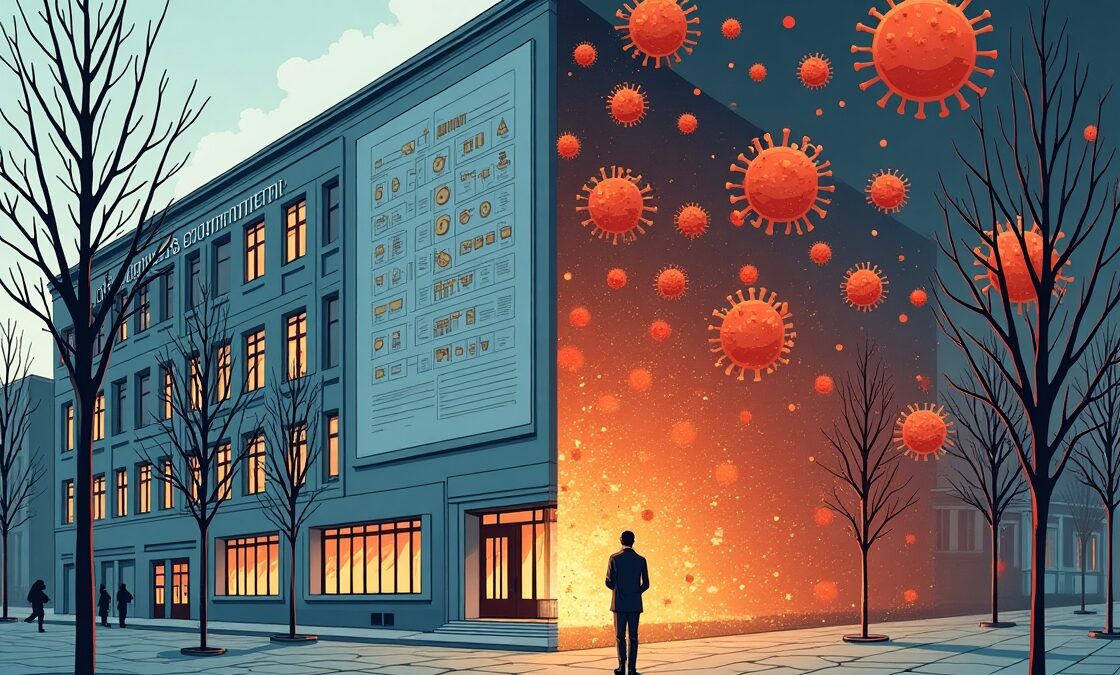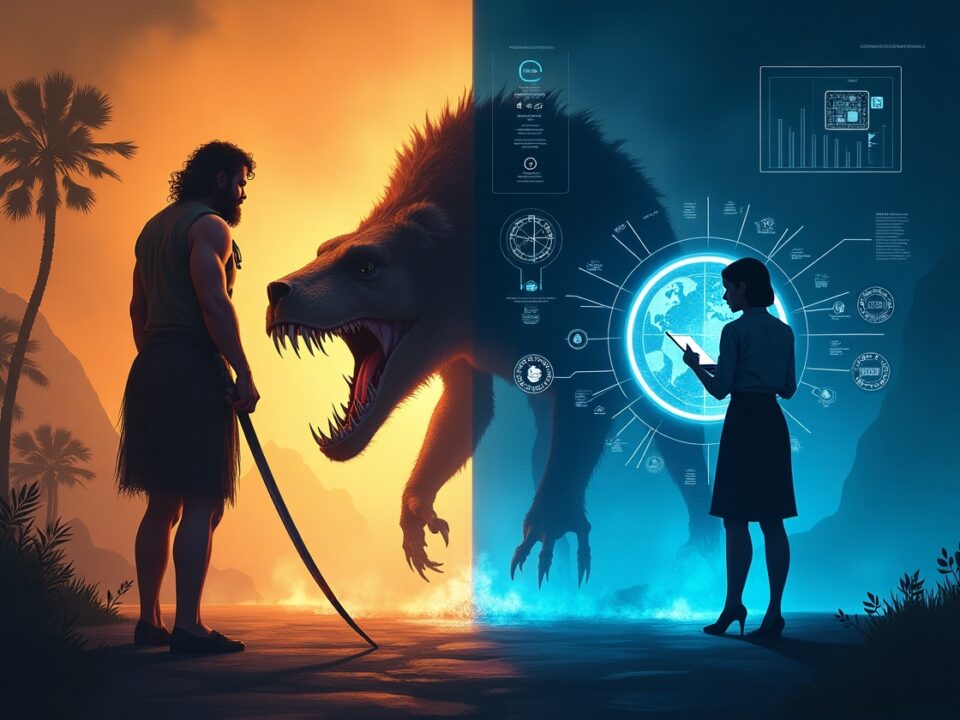Strategic Foresight in Times of Crisis: Lessons from the Corona Pandemic

The COVID-19 pandemic has tested Dutch society, economy and government in an unprecedented way. What began as reports about a mysterious virus in a Chinese city, grew into the biggest public health crisis since WWII. On Budget Day 2020, Minister Hoekstra characterized COVID-19 as a ‘black swan’ – an unpredictable event with extreme consequences (ESB, 2022). But was the pandemic truly so unforeseeable, or rather a ‘grey rhino’ – a risk that was visible to those who looked carefully? (TEDxHaarlem, 2020). This question touches the core of what strategic foresight can mean in anticipating unexpected events.
The Netherlands’ Preparedness: Theory versus Practice
The Netherlands considered itself well-prepared for pandemics. The RIVM had extensive plans, scenarios had been developed, and the country had a respected public health system (ZonMw, 2023). Reality, however, showed a different picture. Despite warnings from international organizations and experiences with SARS and MERS, the Netherlands – like most countries – was surprised by the speed and scale of the spread (KPMG, 2021).
During the crisis, the RIVM quickly developed three scenarios for the virus’s course: a ‘peat fire scenario’ with small flare-ups, ‘peaks and valleys’, and a ‘high wave scenario’ (RIVM, 2020). These scenarios proved crucial for policy decisions, but only emerged after the crisis had broken out. The question this raises is why comparable scenarios had not been developed earlier, despite repeated international warnings about pandemic risks.
Typical Pitfalls in Strategic Foresight During Crisis
The corona pandemic illustrates classic pitfalls known from literature on wild cards and scenario planning. Wild cards – sudden, unique events that can form turning points – require specific forms of preparation (Mendonça et al., 2004). The pandemic showed three fundamental challenges:
Expecting the unexpected: Experts had warned for years about pandemic risks, but the specific timing and form of COVID-19 remained unpredictable. This paradox – an expected surprise – clarifies why traditional risk models fail with wild card events (Harvard Business Review, 2023).
Not recognizing negative signals: Early warnings from China were not adequately translated into Dutch preparedness measures. This illustrates what risk analysts call ‘availability bias’ – recent and nearby events receive more attention than distant signals (RIVM, 2022).
Framing of the phenomenon: The way COVID-19 was framed changed dramatically during the crisis. Initially there was talk of a ‘little flu’, later of an ‘intelligent lockdown’, and ultimately of a ‘new reality’. These framing effects influenced both policy response and support for measures (RIVM, 2024).
Cognitive Biases in Dutch Crisis Decision-Making
The Dutch approach to COVID-19 showed various cognitive distortions that influenced decision-making. Present bias – the tendency to weigh immediate interests more heavily than future ones – initially led to caution with drastic measures. Optimism bias – the tendency to overestimate positive outcomes and underestimate negative events – ensured that the best scenario was often taken as the starting point. And through anchoring bias (the excessive dependence on the first information we receive about a subject), the first WHO advice about, for example, face masks was allowed to influence Dutch policy for a long time (Safety Board, 2022). This bias ensures that all subsequent decisions are measured against the first reference point, even when new information contradicts this first ‘anchor’.
These three cognitive ‘biases’ have an evolutionary basis: they helped our ancestors make quick decisions in life-threatening situations. Present bias encouraged immediate action in acute dangers, optimism bias gave courage to take risks necessary for survival, and anchoring bias offered an efficient way to process complex information by using a reference point.
In modern crises like COVID-19, however, these mental shortcuts can work counterproductively, because they lead to systematic errors in risk analysis and long-term planning – precisely what is needed in combating a pandemic. And these are not the only biases that became visible during the pandemic. Especially the planning fallacy (the tendency to underestimate the time, costs and risks of future tasks) became visible in time estimates. Measures that would last ‘a few weeks’ stretched out over months. The economic scenarios of the CPB varied from 1.2% contraction in the best scenario to 7.7% in the worst – the reality of 3.7% contraction was closer to the more pessimistic scenario (CBS, 2021).
Framing Effects in Different Crisis Phases
Research into Dutch COVID-19 press conferences shows how framing effects evolved during the crisis (RIVM, 2024). Initially there was talk of a ‘little flu’, later of an ‘intelligent lockdown’, and ultimately of a ‘new reality’. These framing effects influenced both policy response and support for measures (RIVM, 2024).
In strategic foresight, this framing phenomenon is particularly relevant for wild cards – sudden, unlikely events with great impact that can form turning points in societal developments (Petersen, 1999). Wild cards like pandemics typically go through different framing phases: from denial or trivialization in the initial phase (“this is just a little flu”), via dramatization during the acute crisis (“intelligent lockdown”), to normalization afterwards (“new reality”).
This framing evolution influences not only public perception, but also the speed and effectiveness of policy measures. As futures researchers argue, recognizing these framing patterns in wild cards can help to be better prepared for similar disruptive events in the future (WRR, 2010).
Comparison with Previous Major Crises
COVID-19 was not the first major crisis to hit the Netherlands, but differed fundamentally from previous disasters. Where natural disasters like floods are geographically bounded and terrorist attacks are sudden but local, COVID-19 was both long-lasting and omnipresent and also somewhat invisible. The Safety Board found that the Netherlands had learned lessons from the Mexican flu of 2009, but mainly in the area of European vaccine cooperation (Safety Board, 2022).
Compared to the financial crisis of 2008, COVID-19 showed the vulnerability of efficiency-optimized systems. Where the financial sector built buffers after 2008, healthcare had focused on ‘lean’ processes with minimal overcapacity. This made the system efficient in normal times, but fragile during crisis (KPMG, 2021).
International comparison shows that countries with recent pandemic experience – like South Korea (MERS) and Taiwan (SARS) – performed better than countries without this experience. This suggests that ‘corporate memory’ and institutional learning are crucial for strategic foresight (WHO Europe, 2022).
The Role of Strategic Foresight: From Reactive to Proactive
The COVID-19 pandemic has made the Dutch policy world painfully aware of the limitations of traditional, reactive decision-making and the necessity of systematic strategic foresight. Where the Netherlands considered itself well-prepared for pandemics through the RIVM’s extensive plans, crucial elements of modern foresight methodology were missing (NIPV, 2022).
Horizon scanning and weak signals: A fundamental shortcoming was the absence of systematic horizon scanning for ‘weak signals’ that could herald a pandemic. Although international warnings about pandemic risks had existed for years, these were not translated into concrete Dutch preparedness scenarios.
Real-time foresight during crisis: During the acute crisis phase, the RIVM quickly developed three future scenarios – ‘peat fire’, ‘peaks and valleys’, and ‘high wave’ – that proved crucial for policy decisions. This practice of ‘real-time foresight’ – continuing to develop future images during a crisis – shows the value of scenario planning under time pressure (Luesink et al., 2024).
Strategic foresight infrastructure: The corona-inclusive Public Health Strategic Foresight (c-VTV) of 2020 illustrated how strategic foresight can help in anticipating long-term effects of crisis. By analyzing not only direct health effects, but also indirect consequences like mental health, economic impact and societal inequality, this exploration showed the added value of integral strategic foresight analysis (RIVM, 2020).
From crisis to structural improvement: The pandemic has led to institutional changes in Dutch strategic foresight. The National Agenda Crisis Management of 2024 explicitly emphasizes the necessity of ‘robust preparation and information sharing’ and setting up systematic early warning systems. The Netherlands Institute for Public Safety (NIPV) developed new methodologies for crisis scenario planning that incorporate the lessons of COVID-19 (NCTV, 2024).
Lessons for future wild cards: COVID-19 functioned as a ‘wild card’ – an event with low probability but high impact that undermined fundamental assumptions about safety and predictability. Strategic foresight could have helped by systematically exploring such disruptive scenarios, even if they were ‘unlikely’ at the time. The Dutch government now invests in horizon scanning methods that better anticipate such disruptive developments (WRR, 2021).
The core lesson is that strategic foresight is not about predicting specific crises, but about building ‘adaptive capacity’ – the ability to quickly learn, adjust and develop new scenarios when reality turns out differently than expected. COVID-19 has demonstrated that this capacity is not a luxury, but a strategic necessity for resilient, robust societies.
Sources:
- ESB, 2022: Why a policy maker who warned about pandemics doesn’t count for two. https://esb.nu/waarom-een-voor-pandemie-gewaarschuwde-beleidsmaker-niet-voor-twee-telt/
- Harvard Business Review, 2023: When Scenario Planning Fails. https://www.hbs.edu/faculty/Pages/item.aspx?num=64041
- KPMG, 2021: These are the lessons from 1.5 years of corona crisis. https://assets.kpmg.com/content/dam/kpmg/nl/pdf/2021/sectoren/dit-zijn-de-lessen-van-15-jaar-coronacrisis.pdf
- NIPV, 2022: Future Exploration Crisis Management. https://nipv.nl/wp-content/uploads/2022/10/20221027_NIPV_Toekomstverkenning-Crisisbeheersing.pdf
- NCTV, 2024: National Agenda Crisis Management. https://www.nctv.nl/binaries/nctv/documenten/publicaties/2024/06/11/landelijke-agenda-crisisbeheersing/Landelijke+Agenda+Crisisbeheersing.pdf
- Luesink et al., 2024: Scenario planning to enable foresight in crisis management. https://jeroenwolbers.com/wp-content/uploads/2024/04/luesink-et-al-2024-scenario-planning-to-enable-foresight-in-crisis-management.pdf
- Safety Board, 2022: Corona crisis approach – Part 2: September 2020 to July 2021. https://www.eerstekamer.nl/overig/20221012/aanpak_coronacrisis_deel_2/document3/f=/vlx5bqo7qxzh_opgemaakt.pdf
- RIVM, 2020: Corona-inclusive VTV. https://www.rivm.nl/volksgezondheid-toekomst-verkenning-vtv/c-vtv
- RIVM, 2024: Behavioral science analysis of press conferences during COVID-19. https://www.rivm.nl/bibliotheek/rapporten/2024-0091.pdf
- TEDxHaarlem, 2020: Corona: the black swan that turned out to be a grey rhino. https://www.tedxhaarlem.com/article/corona-zwarte-zwaan-grijze-neushoorn-bleek/
- WHO Europe, 2022: Recommendations for Good Practice in Pandemic Preparedness. https://www.nivel.nl/sites/default/files/bestanden/NIV_955.pdf
- WRR, 2021: COVID-19: Expert views on the consequences for society and policy. https://www.wrr.nl/binaries/wrr/documenten/publicaties/2021/07/15/covid-19-expertvisies-op-de-gevolgen-voor-samenleving-en-beleid/212.009+-+Expertvisies+op+de+gevolgen+voor+samenleving+en+beleid_WT_single.pdf
- ZonMw, 2023: The Netherlands Country Profile BE-READY. https://www.zonmw.nl/sites/default/files/2023-10/Country-Profile-NL_BE-READY.pdf


